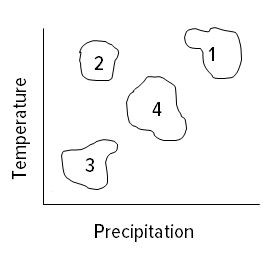Compare arthropods, echinoderms, and chordates in terms of their similarities and differences.
What will be an ideal response?
Like arthropodos, echinoderms and chordates have a true body cavity and an organ-system level of organization. Differences between the phyla include the skeleton (exoskeleton of chitin for arthropods, a calcareous endoskeleton for enchinoderms, and an endoskeleton of cartilage or bone for chordate) and body symmetry (bilateral for arthropods, radial for echinoderms, and bilateral for chordates).
You might also like to view...
What differentiates diagnostic techniques that employ phenotypic (culture-based) methods from those that employ molecular methods?
a. Phenotypic methods are highly sensitive and specific, while molecular methods are not. b. Phenotypic methods examine the growth behavior of a microorganism and the pro-teins, enzymes, or toxins produced, while molecular methods examine the genetic makeup. c. Phenotypic methods are quantitative while molecular methods are not. d. Phenotypic methods are not limited to de-tection of live organisms as are molecular methods.
Fructose and glucose are
a. isotopes. b. monosaccharides. c. disaccharides. d. six-carbon sugars. e. both monosaccharides and six-carbon sugars.
A single carbon atom can form a maximum of ________ covalent bond(s)
A) 0 B) 1 C) 2 D) 4
Biomes are broad regional areas with defined flora and fauna. Which one of the following choices correctly identifies the biomes shown plotted in the graph of precipitation versus temperature? 
A. Tropical Rain forest = 3; Desert = 4; Tundra = 1; Grassland = 2 B. Tropical Rain forest = 1; Desert = 3; Tundra = 4; Grassland = 2 C. Tropical Rain forest = 1; Desert = 2; Tundra = 3; Grassland = 4 D. Tropical Rain forest = 3; Desert = 1; Tundra = 2; Grassland = 3